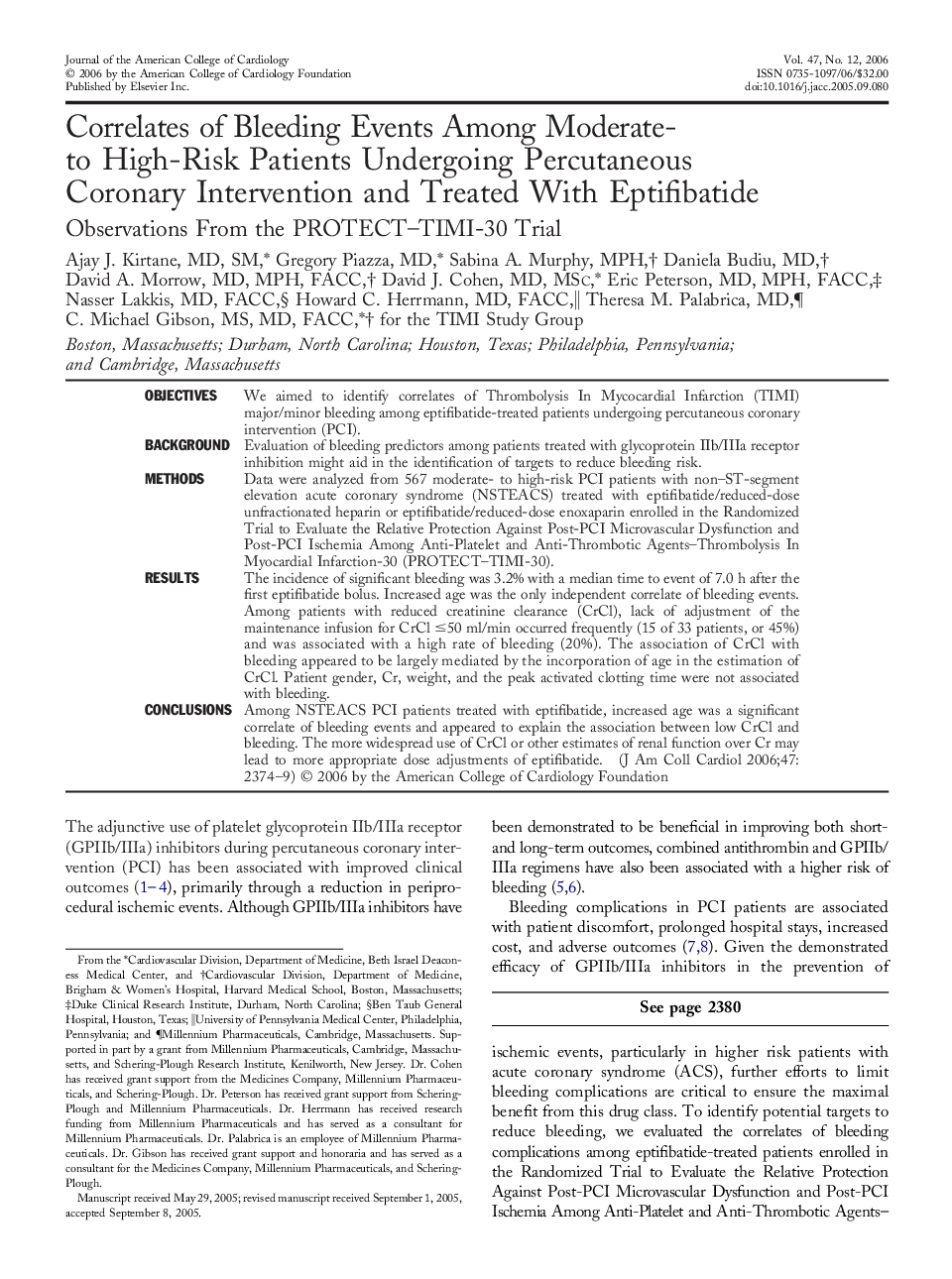| Article ID | Journal | Published Year | Pages | File Type |
|---|---|---|---|---|
| 2954058 | Journal of the American College of Cardiology | 2006 | 6 Pages |
ObjectivesWe aimed to identify correlates of Thrombolysis In Mycocardial Infarction (TIMI) major/minor bleeding among eptifibatide-treated patients undergoing percutaneous coronary intervention (PCI).BackgroundEvaluation of bleeding predictors among patients treated with glycoprotein IIb/IIIa receptor inhibition might aid in the identification of targets to reduce bleeding risk.MethodsData were analyzed from 567 moderate- to high-risk PCI patients with non–ST-segment elevation acute coronary syndrome (NSTEACS) treated with eptifibatide/reduced-dose unfractionated heparin or eptifibatide/reduced-dose enoxaparin enrolled in the Randomized Trial to Evaluate the Relative Protection Against Post-PCI Microvascular Dysfunction and Post-PCI Ischemia Among Anti-Platelet and Anti-Thrombotic Agents–Thrombolysis In Myocardial Infarction-30 (PROTECT–TIMI-30).ResultsThe incidence of significant bleeding was 3.2% with a median time to event of 7.0 h after the first eptifibatide bolus. Increased age was the only independent correlate of bleeding events. Among patients with reduced creatinine clearance (CrCl), lack of adjustment of the maintenance infusion for CrCl ≤50 ml/min occurred frequently (15 of 33 patients, or 45%) and was associated with a high rate of bleeding (20%). The association of CrCl with bleeding appeared to be largely mediated by the incorporation of age in the estimation of CrCl. Patient gender, Cr, weight, and the peak activated clotting time were not associated with bleeding.ConclusionsAmong NSTEACS PCI patients treated with eptifibatide, increased age was a significant correlate of bleeding events and appeared to explain the association between low CrCl and bleeding. The more widespread use of CrCl or other estimates of renal function over Cr may lead to more appropriate dose adjustments of eptifibatide.
